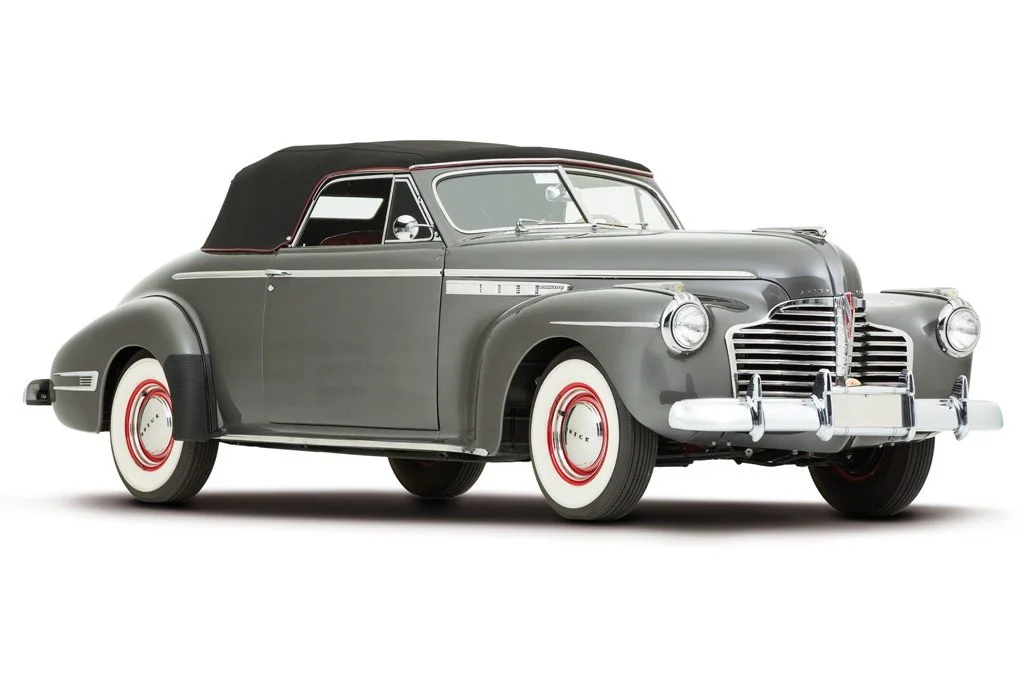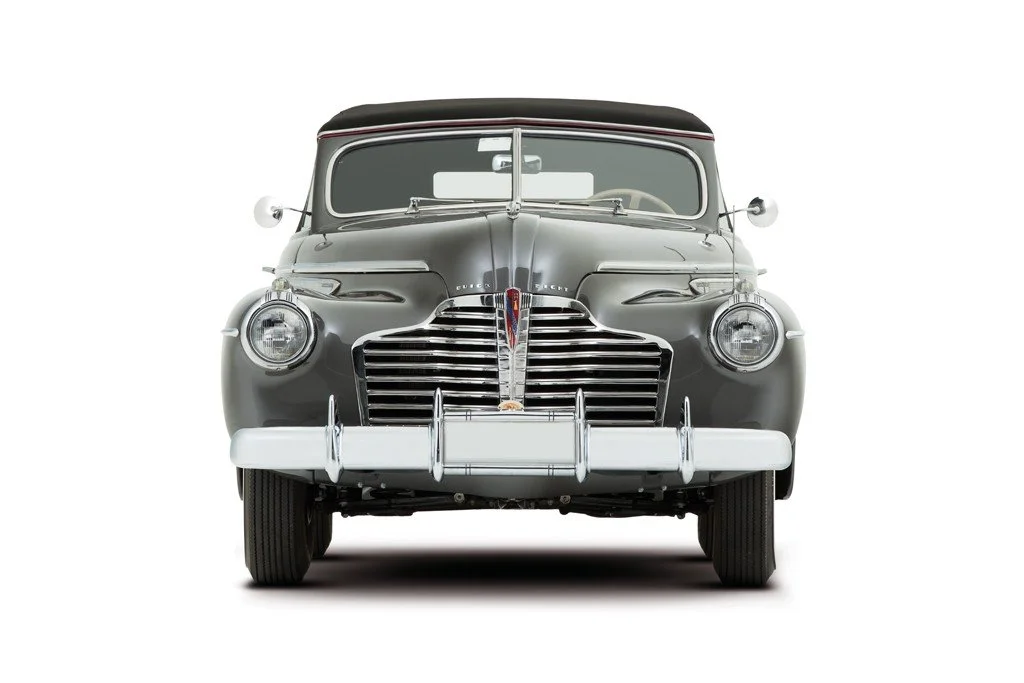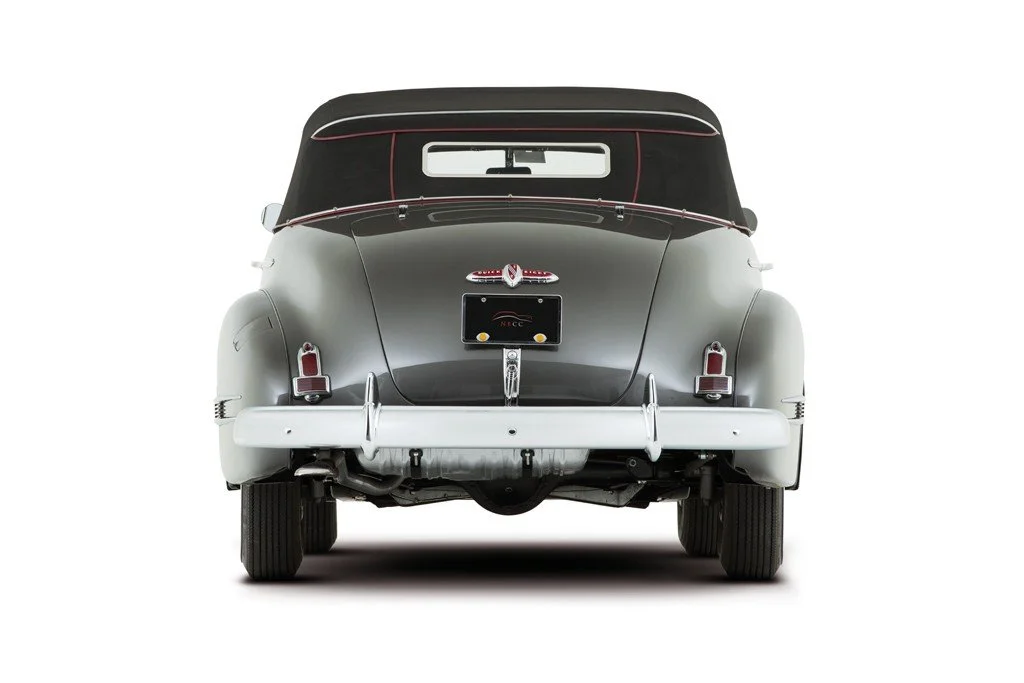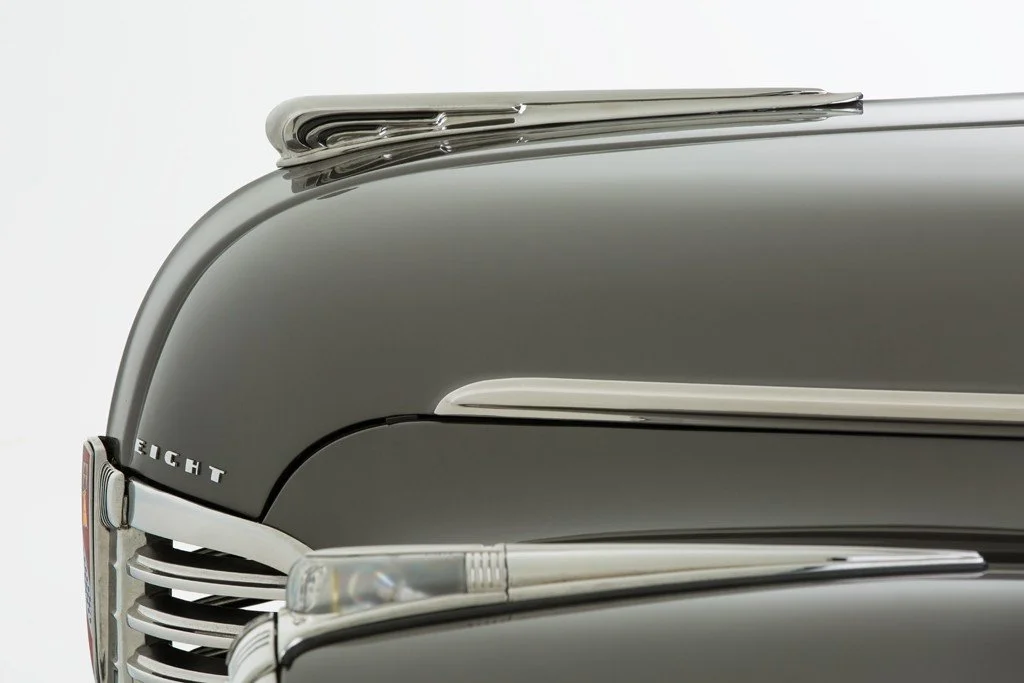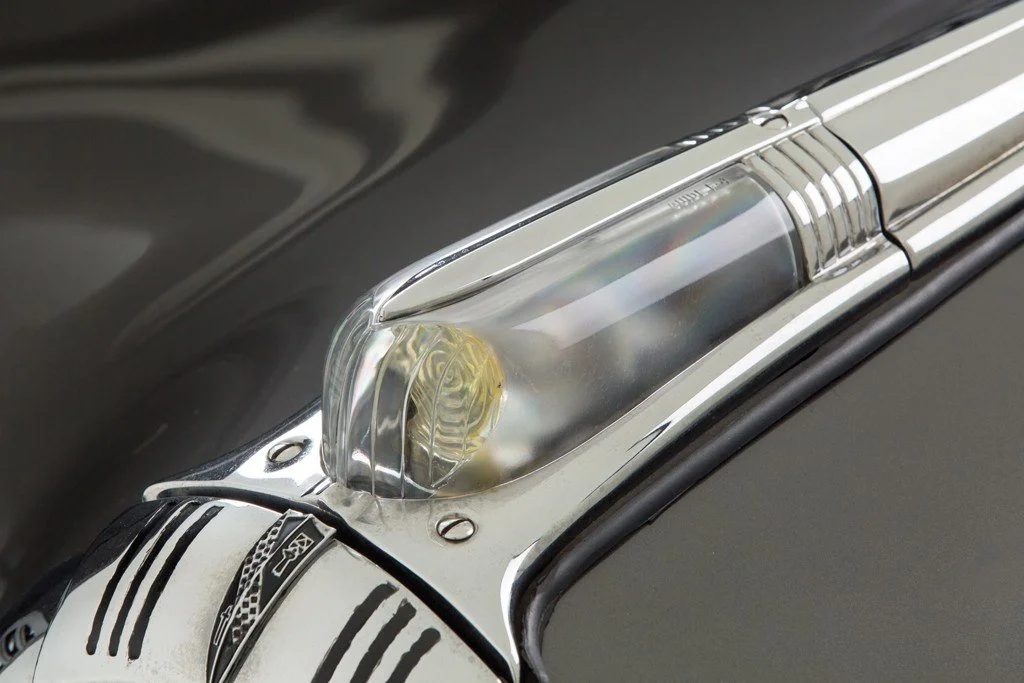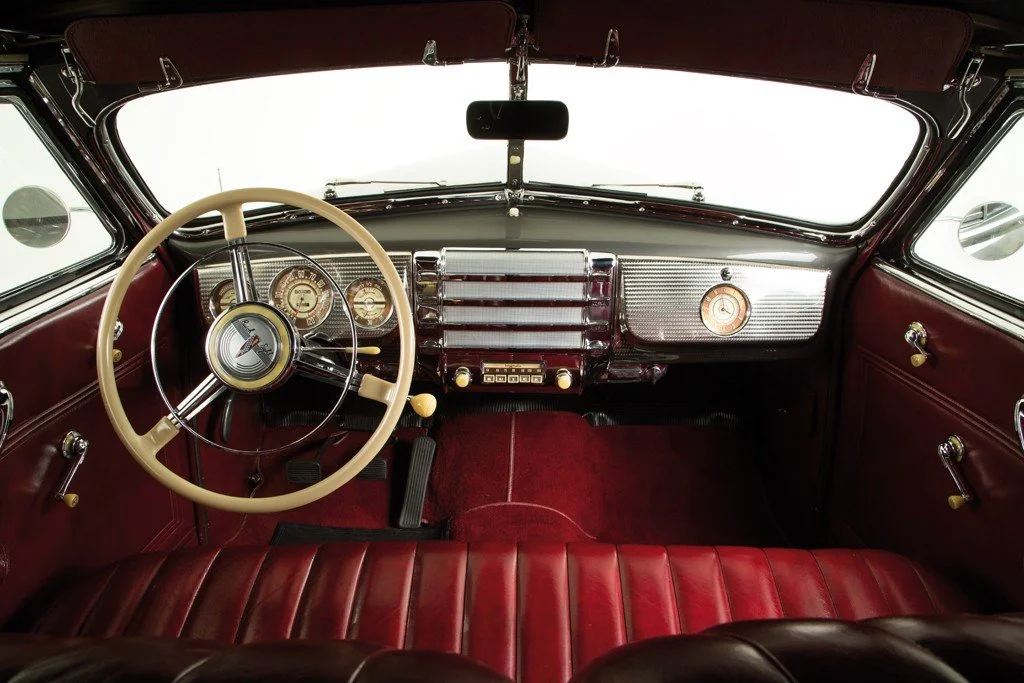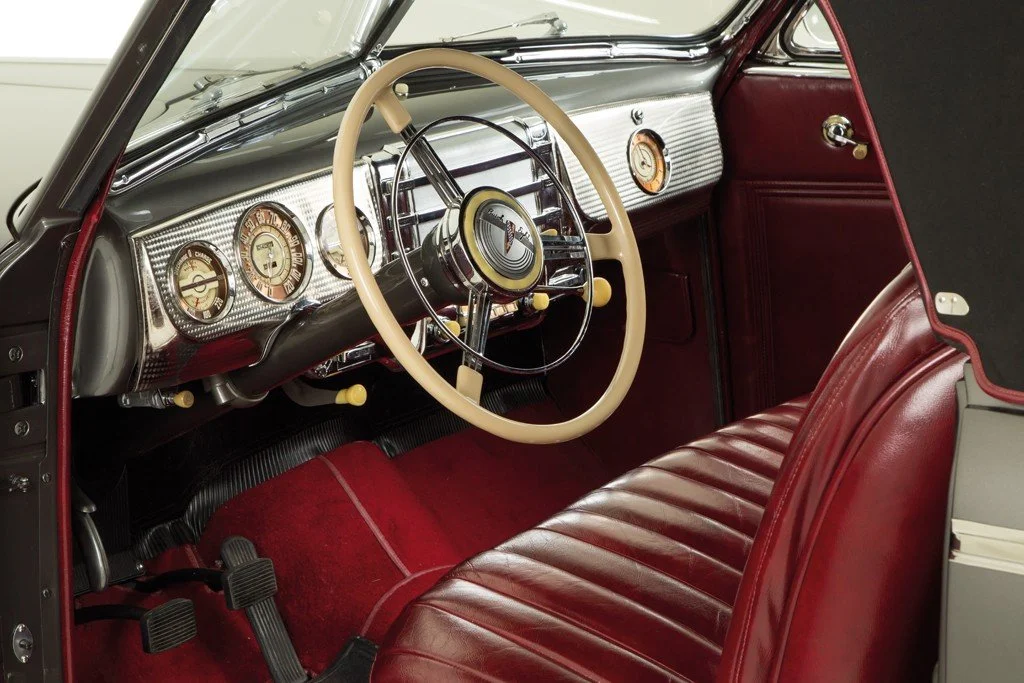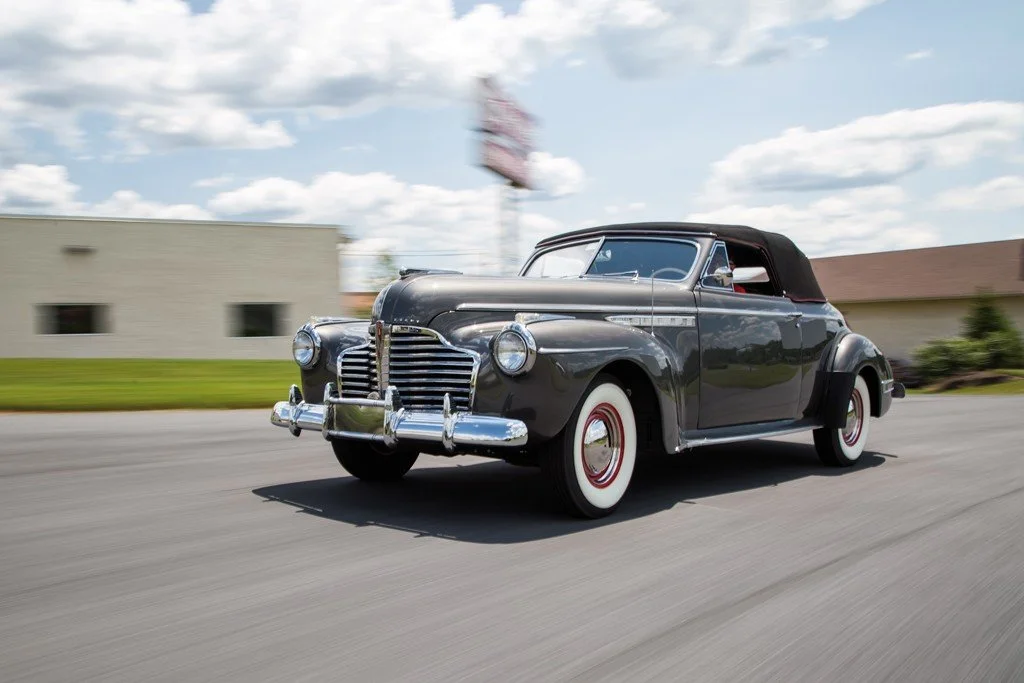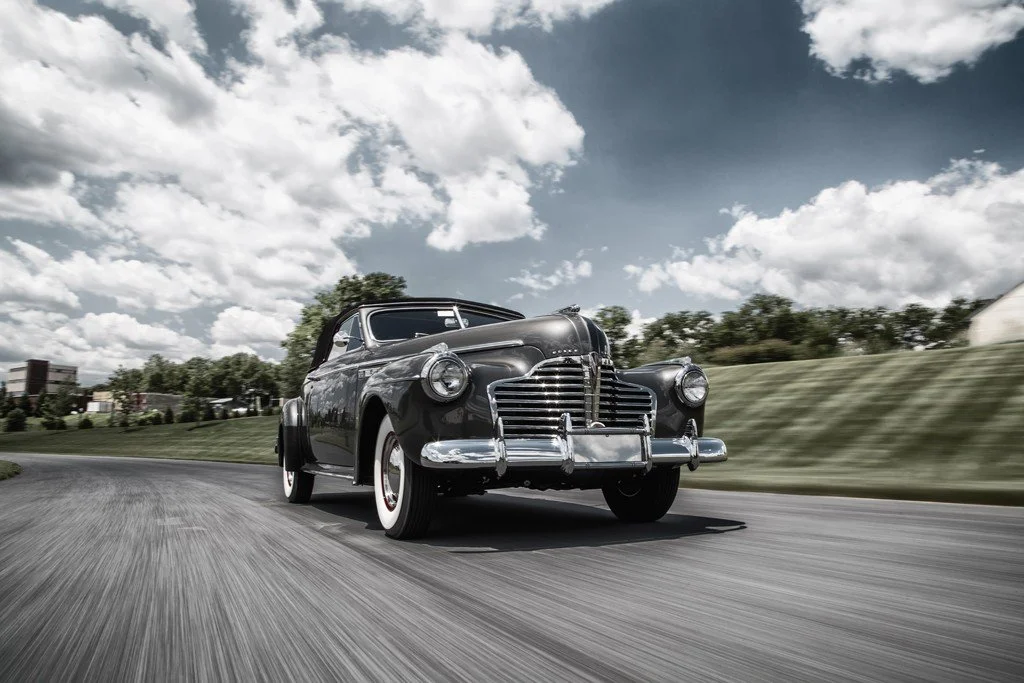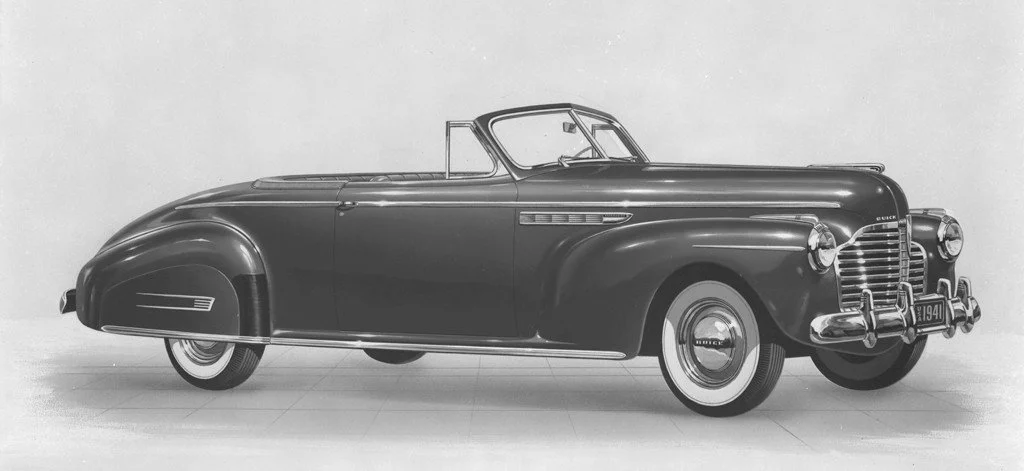-
This Lancaster Grey Buick Roadmaster Convertible is one of 1,845 produced for 1941, and was purchased by the Nicola Bulgari Car Collection in 2012 at the Amelia Island auction, held by RM Sotheby. The car was much appreciated during the auction and was desired by so many people, especially for its rarity and the quality of the restoration.
The car had been restored to the highest standard by marque expert Dog Seybold, using only new old stock parts. The interior leather (in Red leather) was sewn using some surviving rolls of original Buick material. The high level of the restoration has been acknowledged by several Best in Class and Best of Show awards collected at many Buick and Antique Automobile Club of America meets. -
Company
General MotorsWheelbase
126inInterior trim
Red leatherBrakes
front and rear drumsMake
BuickLength
215inEngine
inline 8 - 320cidTires
7.00x15Model
Roadmaster - Model 76CWidth
78inCarburetor
2 Carter 509/510 SOriginal Price
$1,457Body style
2-door Convertible CoupeWeight
4,451lbsHorsepower
165hp @ 3800rpmProduction
1,845Model year
1941Exterior paint
Lancaster GreyTransmission
Synchro-shift 3-speed manual -
Harlow Curtice was appointed as Buick president in 1933, and his first move to save the ailing brand was to reorganize the dealer network. His second move was to introduce the Special series, a cheap model built with a Chevrolet body on a Pontiac chassis, but with the proverbial Buick care for detail and quality, and the mandatory straight-eight engine. The new model enjoyed a huge success, so the worst times for the marque seemed to have passed. His third move was to reorganize the line-up for the 1936 model year, and give new life to the traditional big Buicks, to satisfy those customers looking for prestige, quality and performance. The traditional numeral designation for the series was superseded by a name that would represent the car’s niche in the market. So the names became Century, Roadmaster and Limited, in place of the old series 50, 60, or 90. The Roadmaster was a big car, with a 131 inch wheelbase, nine inches more than a Century but seven less than a Limited. The engine was the new straight-eight that had a 320 cubic inch capacity, with a 120 horsepower output, only five less than the new Cadillac V8 with the same displacement. Price was a real bargain, almost 500 dollars less than Cadillac. For 1937, the whole Buick line-up was redesigned, while for 1938 there was just a mild facelift. In that year, the mighty 320 engine was modified, with more compression and new pistons, raising the horsepower output to 141. Even with new styling for 1939, sales remained low, with just 6100 cars produced. It was time to change direction, so for 1941 the Roadmaster took the 126 inch wheelbase from the Century, but with added length. With this move, the Roadmaster was a couple hundred pounds lighter than in 1940, smaller in size, and a bit cheaper in price. The body was similar to that used by the Super series, and featured the GM “Torpedo” style that was becoming very popular at the time. Sales rose to almost 19,000 units, about three times the previous year.
For the 1941 model year, the Roadmaster got a mild facelift, with changes limited to the grille, the front fenders, the running boards and some small trimmings. The real news was under the hood, where the big 320 cubic inch straight-eight got some important modifications. The compression ratio was raised from 6.6:1 to 7:1, thanks to the new redesigned pistons. The spark plugs were of a smaller size, from 14 millimeters to 10 millimeters, and lastly, a new type of carburation was adopted. It was called “Compound Carburation” and it consisted in a special intake manifold with two carburetors. They were linked together so that during normal use, just the front one would be used. When the driver pressed the accelerator pedal beyond a fixed point, the rear carburetor would be activated, giving an extra performance boost. These performance modifications upped the horsepower to 165, making this the most powerful production engine in the United States, beating Cadillac by 15 horsepower, Packard by 5 and Chrysler by 25. Dealers were very happy, until some troubles became apparent. The high compression ratio gave detonation under load, and the small spark plugs were prone to fouling, the Compound Carburation raised the already high fuel consumption, and many owners decided to block off the second carburetor.
Sales for the Roadmaster fell to almost 16,000 units, but total Buick production rose to 377,000 cars, with an increase of 90,000 from the 1940 model year. The Roadmaster nameplate was used until 1957, and had always identified the most luxurious model in the Buick line-up. It was used again in 1992-1996, identifying the last rear-wheel drive V8 powered Buick.

